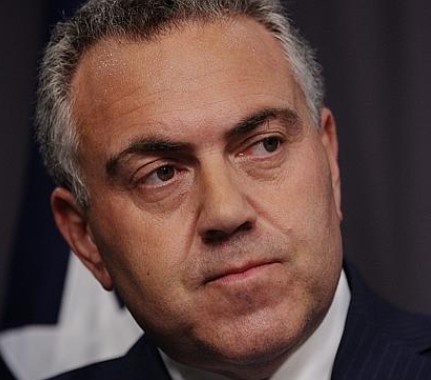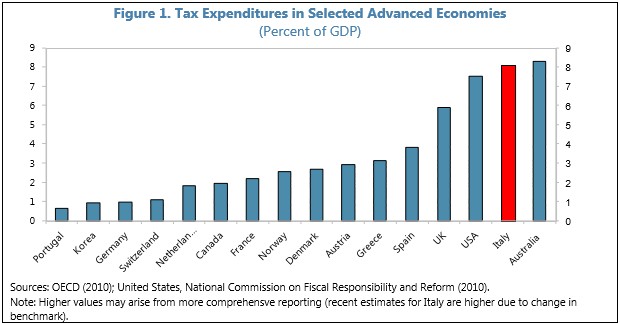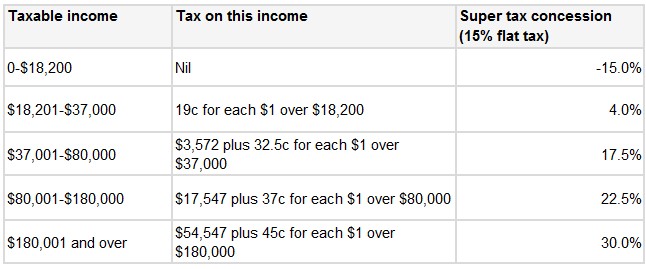
Joe Hockey has outlined the Government’s program of expenditure cuts in a bid to return the Federal Budget to surplus.
There will be tighter means testing of welfare benefits, along with co-payments for some government services (e.g. GP visits), all of which are designed to reduce real spending growth to 1.75% per annum, eradicate the budget deficit in five years, and deliver a surplus equivalent to 1% of GDP by 2023-24. It’s a monumental goal, which will be without precedent, according to Fairfax’s Peter Martin:
By way of comparison spending grew 7.6 per cent per year above inflation in the 1960s, 6.7 per cent above inflation in the 1970s, 3 per cent above in the 1980s, 4 per cent above in the 1990s and 4.4 per cent above in the 2000s.
The Australian’s David Uren provides further context of the mammoth Budget repair task ahead:
Delivering Joe Hockey’s surplus of 1 per cent of GDP will, on the Commission of Audit’s numbers, require a roll-back of the federal government’s weight in the economy of almost 10 per cent.
To put that into context, the required cut is equivalent to the combined total of all current federal spending on schools, universities, hospitals and childcare.
Treasurer Hockey has identified pensions, healthcare, welfare payments, education and defence spending as key targets for cuts, since they are the fastest growing areas of expenditure. According to The AFR, “total spending in these areas would grow from $409 billion a year now to $686 billion a year by 2023-24”.
The Aged Pension and associated seniors benefits are looking particularly vulnerable. The cost of the Pension alone is forecast to grow from $39.5 billion this year to $72.3 billion in a decade. And Hockey rightly believes that aged welfare can be better targeted to those in genuine need. According to Hockey:
The $40bn we spend on income support through the age pension is much more than we spend on defence, or hospitals or schools each year. It is our single biggest spending program,” he said, pointing out that between 2010 and 2050 the number of people age 65 to 84 is expected to quadruple.
And the vast majority of over-65s receive some form of government payment.
“Of Australians over the age of 65, four out of five receive a full or part pension. If we also take into account the concessionary health card, then only 14% of older Australians receive no government payments”…
The seniors health card is available to pensioner couples with an income $80,000 a year or singles with an income of $50,000 but has no assets test.
And without cutbacks to expenditure, the Budget deficit will balloon and working Australians will be required to pay much more tax, damaging the economy:
If no tax cuts were delivered, bracket creep would “have a serious impact on Australia’s economic growth prospects’’. Mr Hockey said without tax cuts, 3 million more workers would have taxable income exceeding $80,000 and be paying 45¢ in the dollar, up from 37¢ they now pay…
“In the absence of personal income tax cuts, over time Australians will face an increasing tax burden as inflation gradually pulls them into higher tax brackets. Those who may oppose the hard savings measures necessary to deliver genuine fiscal repair would do well to recognise the highly regressive nature of fiscal drag. The three million taxpayers affected will not be High Street executives on the top marginal rate, but hard working wage earners on Main Street.”
While I agree with Hockey that the ageing of Australia’s population and rising old-aged dependency requires some cutbacks in government programs and tighter means testing to ensure that welfare only flows to those in genuine need, I am amazed that the Coalition has totally ignored the elephant in the Budget room: Australia’s world-leading tax expenditures.
One of the key reasons behind Australia’s growing Budget black hole is that we lose a significant share of revenue through tax concessions. In fact, a report released early this year by the IMF revealed that Australia has the highest tax expenditures in the OECD when measured against GDP (see next chart).

With tax expenditures defined by the IMF as:
…government revenues foregone as a result of differential, or preferential, treatment of specific sectors, activities, regions, or agents. They can take many forms, including allowances (deductions from the base), exemptions (exclusions from the base), rate relief (lower rates), credits (reductions in liability) and tax deferrals (postponing payments).
The IMF estimates that tax expenditures reduce Australian government revenue by around 8% of GDP – theoretically enough to eliminate Australia’s Budget deficit. In fact, the huge loss of revenues to tax concessions explains why Australia simultaneously has some of the highest personal and company taxes in the world, yet is also one of the lowest taxing countries in the OECD – a contradiction in terms.
One of the biggest and most egregious tax expenditure of all are superannuation concessions, which already cost nearly as much as the Aged Pension ($44.8 billion compared to $44.9 billion in age pension), but are also growing more rapidly, meaning they will become a bigger Budget burden over time.
To add insult to injury, superannuation concessions are very poorly targeted, with higher income earners receiving the lion’s share of concessions when they contribute to super, whereas lower income earners actually incur a tax penalty (see below table).

As noted by John Hewson yesterday:
As a result of this poorly targeted tax concession, 36.1 per cent of the benefits go to the top 10 per cent of income earners, whereas the bottom 10 per cent don’t receive any assistance at all, but are instead penalised…
Treasury estimates that from the combined support of superannuation tax concessions and the age pension, most people (about 80 per cent) receive around $270,000 support over their lifetime. In contrast, the top 1 per cent of male income earners receives about $520,000 support over their lifetime, because of significant tax concessions to high-income earners.
So, by providing massive taxation concessions to those on the highest incomes, the Budget is losing billions of dollars of forgone revenue. The super system is also failing to relieve pressure on the Aged Pension, since those that are most likely to need it – lower and middle income earners – receive minimal (if any) concessions, which both hinders their ability to build-up a retirement nest egg and discourages them from making additional contributions.
Put simply, superannuation is an expensive rort that must be stopped, either by winding-back concessions to higher income earners, or as I have advocated previously, providing all tax payers with the same concession (e.g. 15%).
A related issue is that superannuation can be accessed well before the Aged Pension (i.e. tax free at 60) – a problem that will be exacerbated if the Pension access age is pushed-out to 70, but the superannuation access age remains the same.
Genuine entitlement reform is about shared sacrifice, but with those deriving the greatest benefits and most able to look after themselves bearing the largest cuts. Given that superannuation concessions are such a large drain on the Budget, and overwhelmingly favour the wealthy, it is lamentable that Government has refused to include them in its cutting program.

